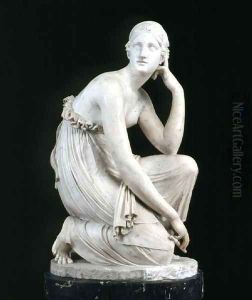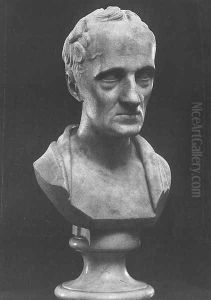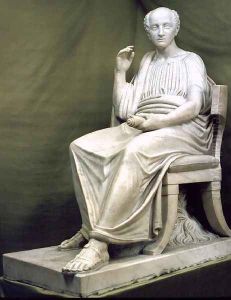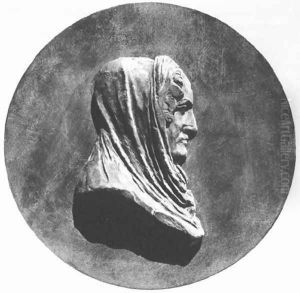Istvan Ferenczy Paintings
István Ferenczy, considered one of the founding figures of Hungarian sculpture, was born on February 24, 1792, in Bratislava, which at the time was part of the Kingdom of Hungary within the Habsburg Empire (present-day Slovakia). Ferenczy showed an early interest in art, but initially, he pursued a career in priesthood due to family pressures. However, his passion for art persisted, and he eventually abandoned his theological studies to dedicate himself to sculpture.
Ferenczy's artistic journey began in earnest when he moved to Vienna in 1812 to study at the Academy of Fine Arts. There, he honed his skills and was influenced by the Neoclassical style, which was predominant at the time. His works from this period reflected classical ideals of beauty and harmony. He furthered his studies in Rome, which was a center for artists seeking to learn from the rich heritage of classical and Renaissance art.
In Rome, Ferenczy was deeply inspired by the masterpieces of antiquity and the works of Renaissance greats such as Michelangelo and Raphael. This influence is evident in his sculptures, which often incorporate elements of classical mythology and allegory. Ferenczy's talent began to be recognized, and he became a member of the Hungarian Academy of Arts. His works were characterized by their detailed execution and expressive realism combined with idealized forms, contributing to the development of Hungarian national art.
Returning to Hungary, Ferenczy became an influential figure in the cultural life of the nation. He worked on numerous public commissions and was committed to fostering a sense of national identity through his art. Among his notable works are the statues of King Stephen I and the allegorical figure of Hungary for the Hungarian National Museum.
Ferenczy's legacy extends beyond his own creations. He played a crucial role in nurturing the next generation of Hungarian artists, including his sons, who also became prominent figures in Hungarian art history. István Ferenczy passed away on June 4, 1856, in Pest (now part of Budapest), but his impact on the field of Hungarian sculpture and his position as a pioneer in the Hungarian national art movement remain significant to this day.



